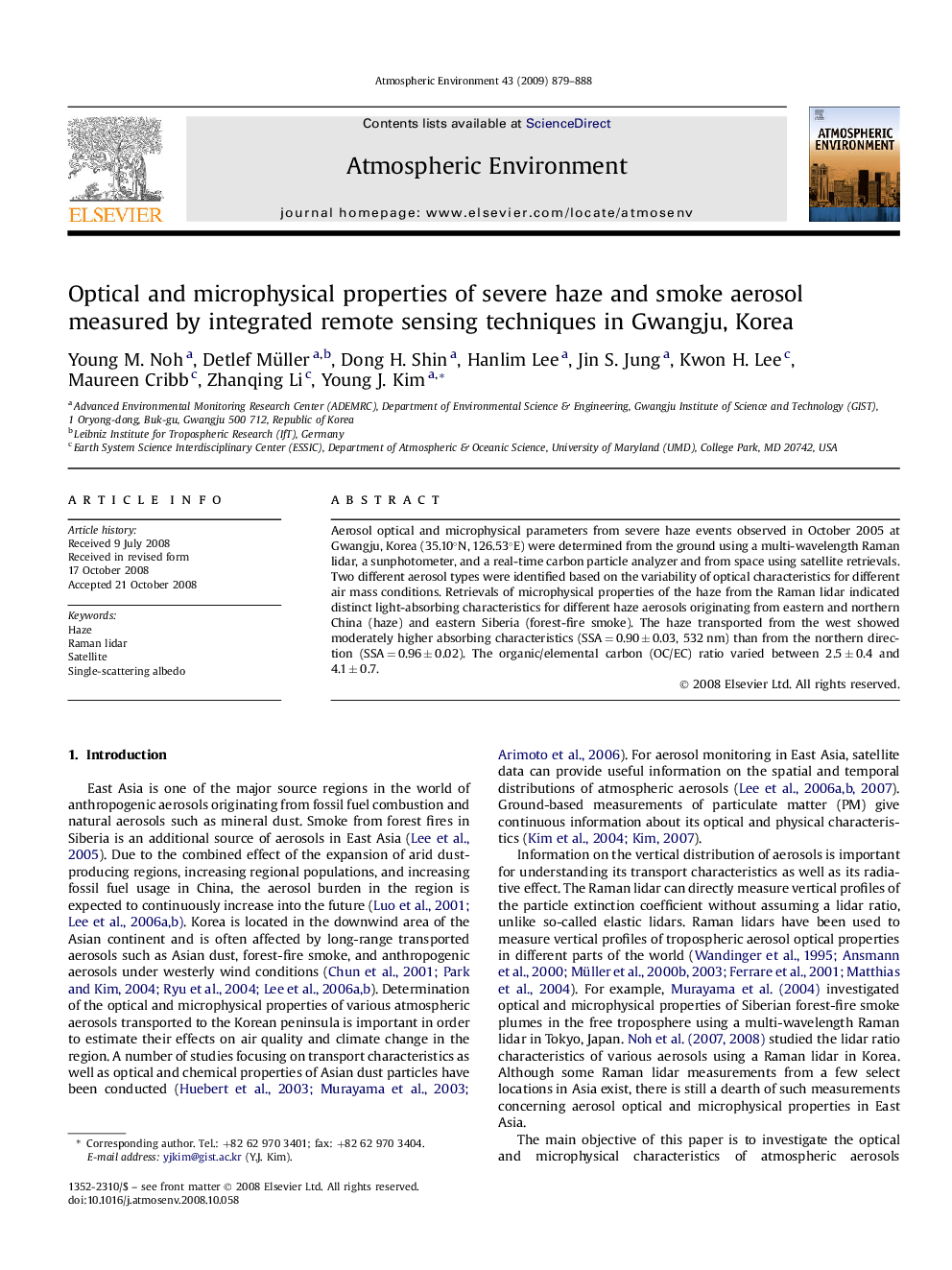| Article ID | Journal | Published Year | Pages | File Type |
|---|---|---|---|---|
| 4442123 | Atmospheric Environment | 2009 | 10 Pages |
Aerosol optical and microphysical parameters from severe haze events observed in October 2005 at Gwangju, Korea (35.10°N, 126.53°E) were determined from the ground using a multi-wavelength Raman lidar, a sunphotometer, and a real-time carbon particle analyzer and from space using satellite retrievals. Two different aerosol types were identified based on the variability of optical characteristics for different air mass conditions. Retrievals of microphysical properties of the haze from the Raman lidar indicated distinct light-absorbing characteristics for different haze aerosols originating from eastern and northern China (haze) and eastern Siberia (forest-fire smoke). The haze transported from the west showed moderately higher absorbing characteristics (SSA = 0.90 ± 0.03, 532 nm) than from the northern direction (SSA = 0.96 ± 0.02). The organic/elemental carbon (OC/EC) ratio varied between 2.5 ± 0.4 and 4.1 ± 0.7.
